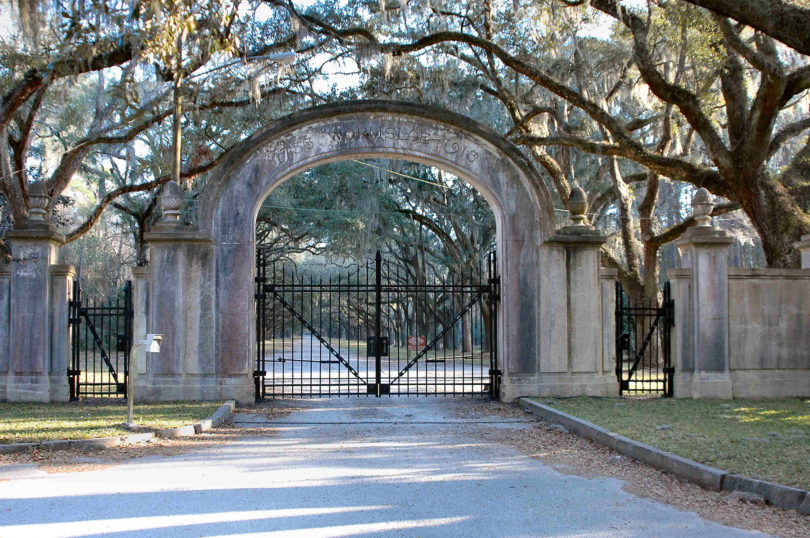A recent groundbreaking ceremony for a new research cabin at the University of Georgia Center for Research and Education at Wormsloe was, without a doubt, not the first time the soil at this historic site had been turned.
Located on the Isle of Hope near Savannah, Wormsloe Plantation dates back to the 1730s. The property has served as a military stronghold, agricultural plantation, country residence, farm and tourist attraction. Oyster shell deposits and other artifacts found at the site suggest it was inhabited by Native Americans some 6,000 years ago.
The trustees of the Wormsloe Foundation donated 15.45 acres of Wormsloe property to the state of Georgia for environmental history research and education, and UGA will operate the donated portion of the property as a historical and ecological preserve for scientific, historical, educational and aesthetic purposes in keeping with the natural and historic character of the property.
At a groundbreaking ceremony in December, UGA President Jere W. Morehead thanked alumnus and Wormsloe Foundation trustee Craig Barrow III, the ninth generation of his family to live on the Wormsloe site, and his wife Diana, who also is an alumnus as well as chairwoman of the foundation.
“We now take a piece of the history of the state of Georgia and we link that piece of history with the University of Georgia to accomplish something truly extraordinary in terms of the research and the service and the outreach that will take place here for generations to come,” Morehead said. “I don’t know how anyone could do more for this institution than Craig and Diana have done.”
The donated parcel contains both highland and marsh land and includes a historic former slave cabin constructed in the late 1840s. The new research cabin at the UGA Center for Research and Education at Wormsloe, also known as UGA-CREW, will house UGA faculty, Wormsloe Fellows and other graduate students while they are conducting research initiatives onsite. UGA-CREW has a broad focus on environmental history and conducts interdisciplinary research with areas of study including archaeology, ecology, environmental planning and design, historic preservation, landscape architecture, geography, history and engineering.
“This wonderful gift will provide many tangible benefits for our college because the site is a living environmental laboratory and a storehouse of past and present designs on the land,” said Daniel Nadenicek, dean of the College of Environment and Design. “The inherent beauty of this small campus will inspire innovation and promote new research and teaching partnerships.”
Environmental history research is managed in partnership with the Georgia Department of Natural Resources and with support from the Wormsloe Foundation. In addition to expertise on the UGA campus in Athens, UGA-CREW coordinates research projects with the Wormsloe State Historic Site and UGA units such as the Skidaway Institute of Oceanography, Marine Extension Service and the Marine Institute at Sapelo Island as well as Savannah State University, Georgia Southern University and Armstrong Atlantic State University.
“Collectively, these research initiatives will contribute to the larger bank of knowledge and enhance opportunities to protect the cultural and natural resources of Georgia’s coastal regions,” said Sarah Ross, director of UGA-CREW and president of the Wormsloe Foundation.





